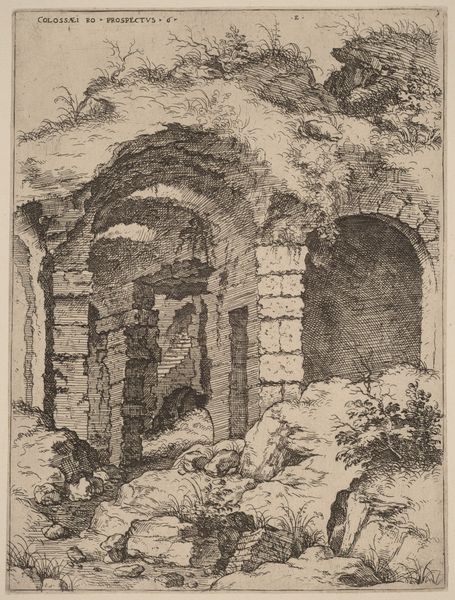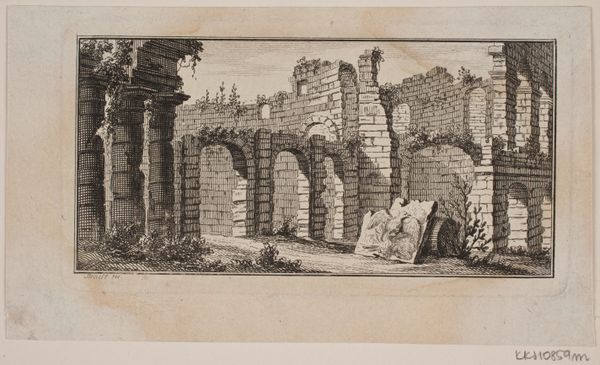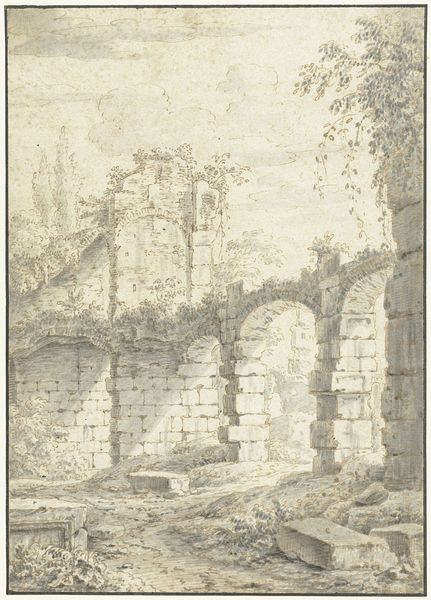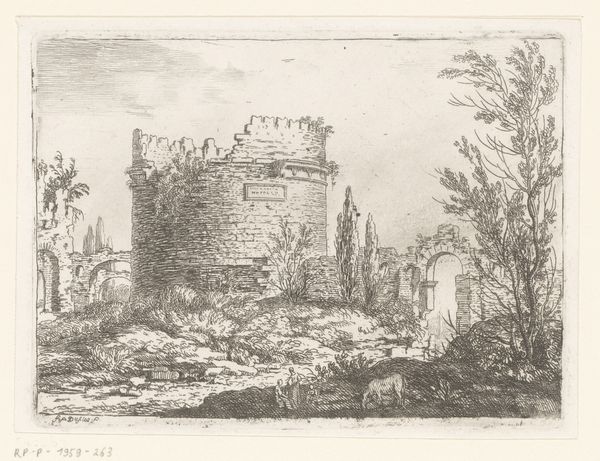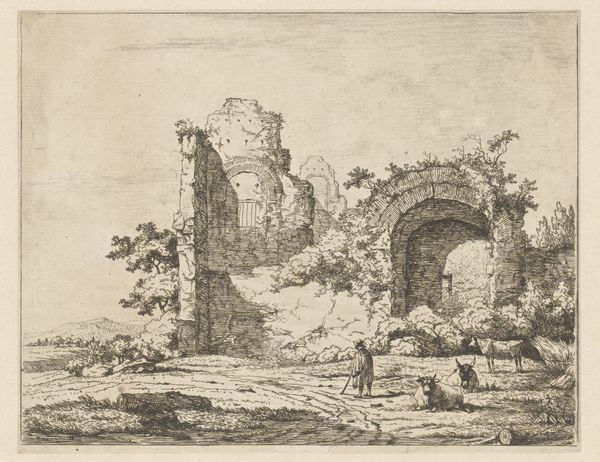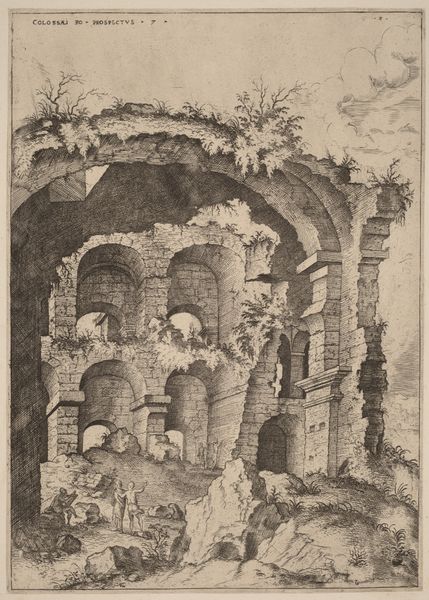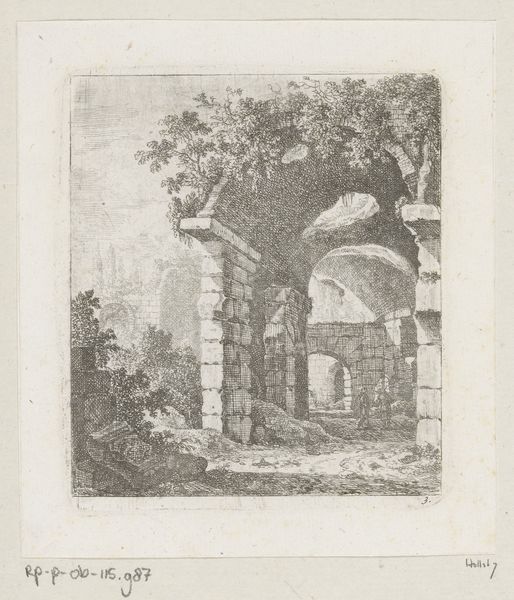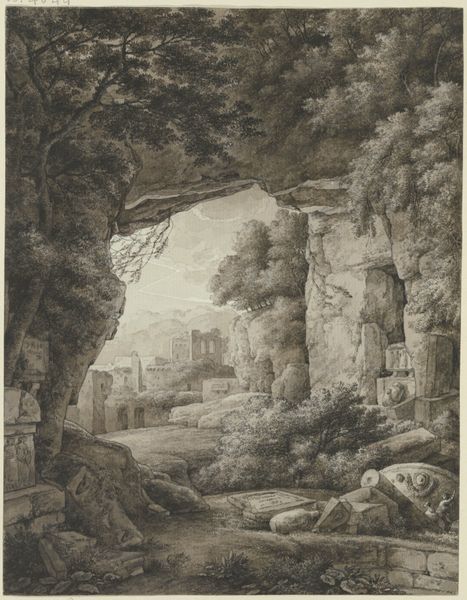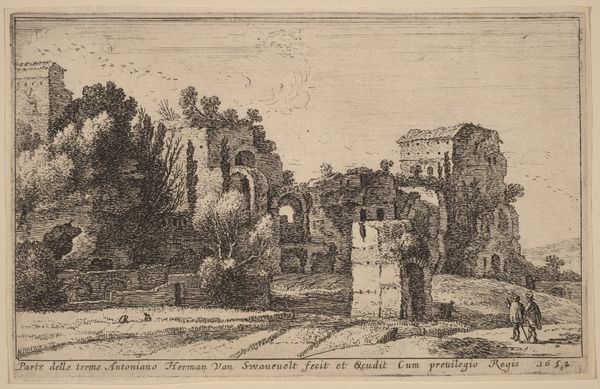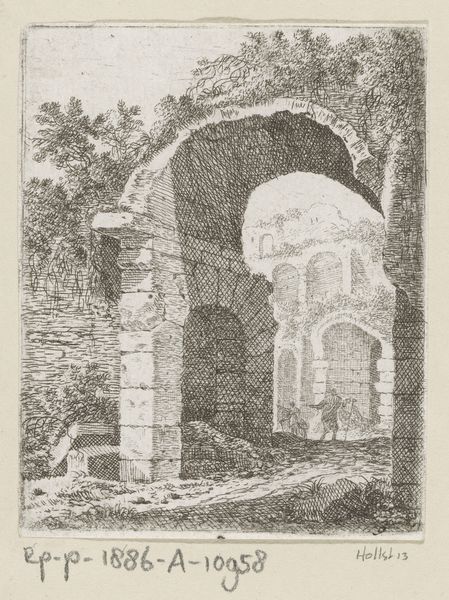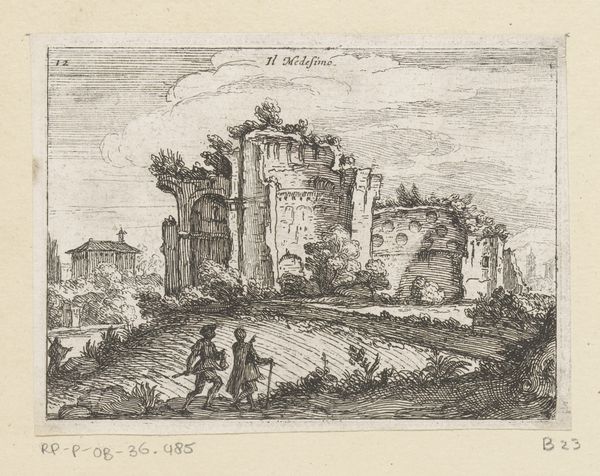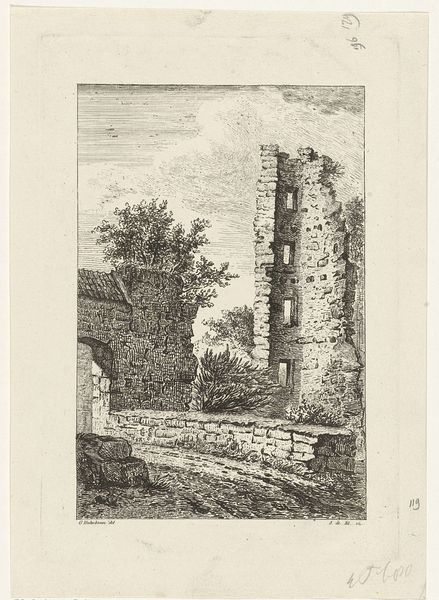
print, etching
#
baroque
# print
#
etching
#
landscape
#
etching
#
figuration
#
cityscape
#
history-painting
#
realism
Dimensions: height 86 mm, width 73 mm
Copyright: Rijks Museum: Open Domain
This etching of a ruin with three men on the right was created by Johann Franz Ermels the Elder in the late 17th century. The printmaking process is crucial here. An etching like this begins with a metal plate, likely copper, coated with a waxy ground. The artist then draws through the ground with a sharp needle, exposing the metal. When the plate is immersed in acid, the exposed lines are etched, creating grooves. Ink is then applied to the plate, filling these grooves, and the surface is wiped clean. Finally, the image is transferred to paper under high pressure. The fine lines of the etching beautifully capture the texture of the weathered stone, the density of the foliage, and the figures' drapery. The linear quality speaks to the engraver's skill, transforming the ruin into a meditation on time, decay, and human presence. It's a reminder that even in what we consider "fine art," the hand of the maker, and the choices of material, are critical to understanding the work's meaning and impact.
Comments
No comments
Be the first to comment and join the conversation on the ultimate creative platform.
